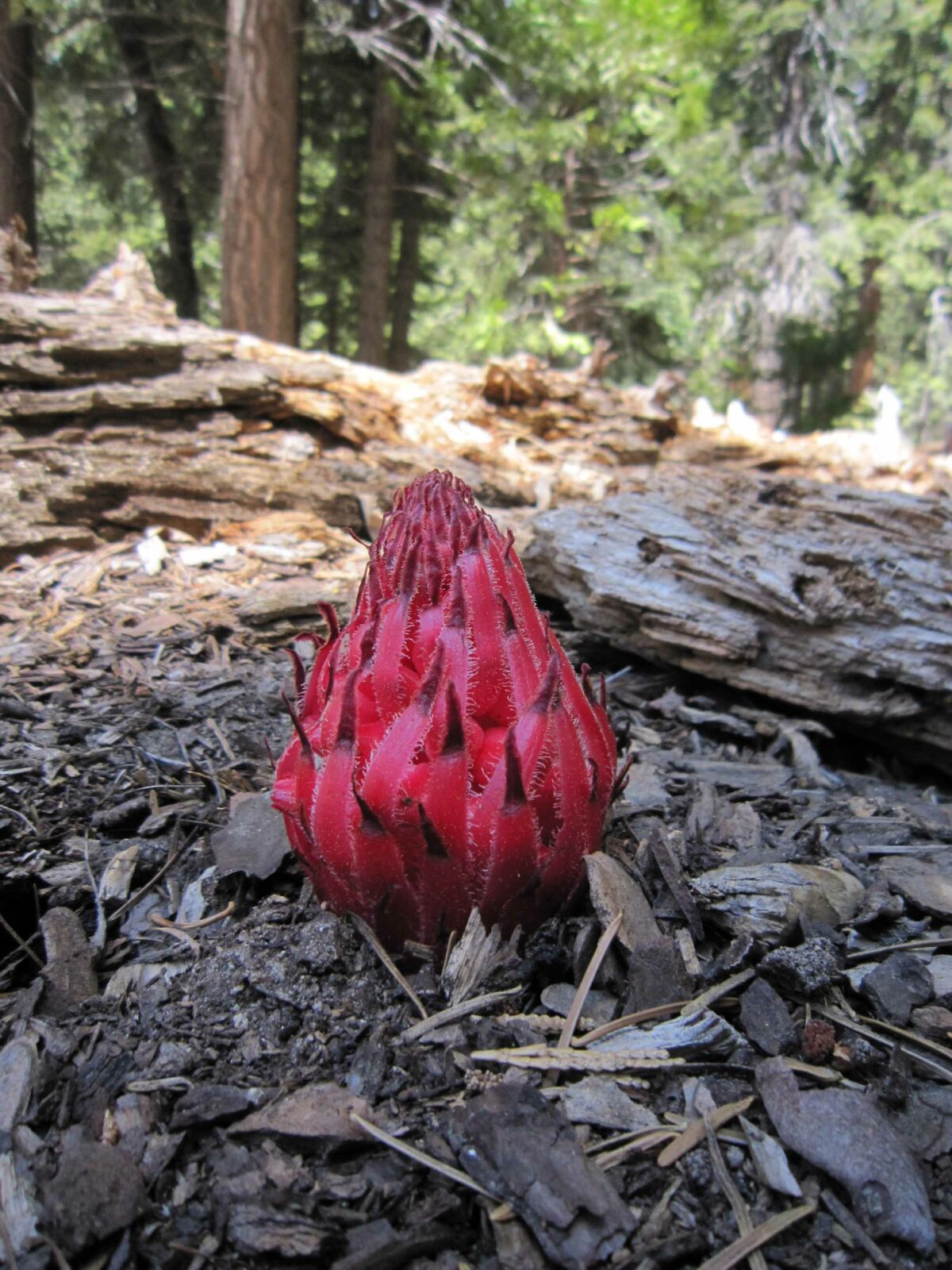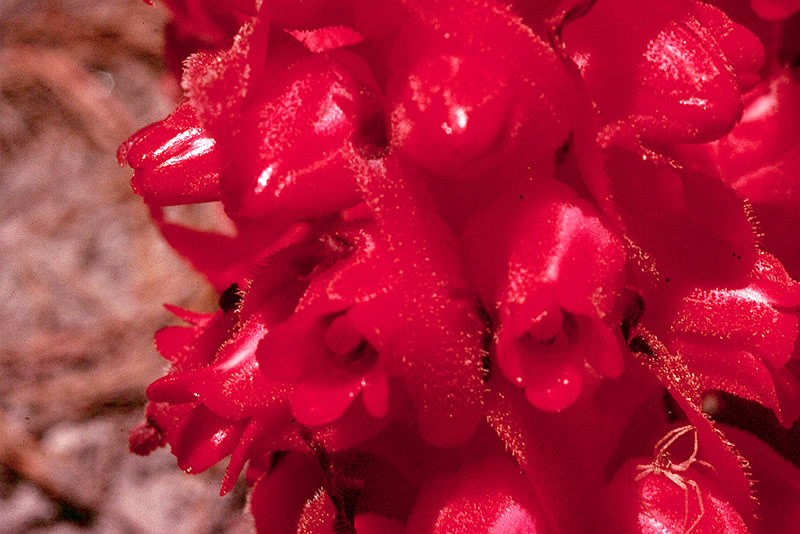The snow plant’s scientific name, sarcodes sanguinea , roughly translates to “the bloody flesh-like thing.”

Photo by NFF
The snow plant does not need the sun to survive.
It derives its nutrients from fungi in the soil, placing it in the mycotrophic category.
Photo by NFF
Because the snow plant lives off of fungi, it’s basically a parasite.

Photo by Gary Monroe
Snow plants pop out of the ground shortly after the snow melts in late spring.
It’s bright red. You’re unlikely to confuse it with anything else on the ground.
Photo by NFF
They usually grow in colonies.
California can nearly claim the snow plant as its own – they’re mostly found in conifer forests in the state. Portions of Western Nevada have also reported the snow plant.
Learn more about snow plants here and here.

